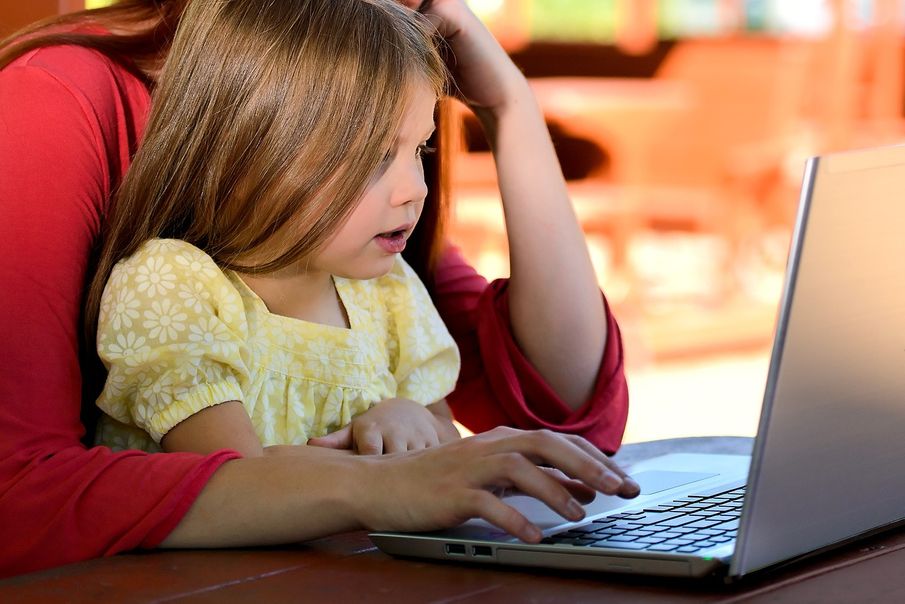Early-years educational expert and Picture News founder, Katie Harrison shares with us her top tips for helping kids learn to spot fake news
Knowing how to spot fake news can be a challenge even for us as adults. It’s become so prevalent in recent years, it was even named the 2017 Official Word of the Year by Collins Dictionary. While some clickbait headlines, dodgy links, and outlandish claims can set off warning signs, more subtle satire can on occasion catch even the savviest of us out.
For children and young people who may be exploring the wonderful online world for the first time on their own or with minimal supervision, it can be easy to get caught up in emotive articles, social media posts, and forum threads. The boundaries between real and fake news can become harder to define from the other side of the screen.
Katie and Rob Harrison set up Picture News to provide resources schools could use to make a difference and help the next generation ditch the confusion around fake news. Katie, a former primary school teacher specialising in global education, spent much of her free time studying news and creating child-friendly resources.
We asked Katie what makes fake news an important subject to teach children early on. “I feel it’s vital that children learn about what’s going on in our world and have the opportunity to discuss it and share their views. It’s so important we let children’s voices be heard and that we help them make sense of what is happening in the world." She explained.
“I knew that a lot of schools are stretched and don’t always have the resources to stay on top of the news agenda. I wanted to help – and that’s how Picture News was born.
“Our aim is to make it easy for schools to encourage children to question what they hear and read, to think around key issues and topics and develop ‘healthy’ news mindsets.”
Discover more about the importance of teaching children about fake news, and Katie’s top tips for kids on how to spot fake news.

Fake news has become news in its own right as we increasingly see it make our headlines and featuring on our news bulletins.
The term ‘fake news’ arose after Donald Trump used it to describe some news reporting in the run-up to the US Presidential election. It’s now a term used by most of us. But what is it? What does it mean to you? And should we be teaching our children about it?
A recent BBC survey sent to 18 countries around the world found that nearly eight in 10 people said they worried about what was fake and what was real on the Internet.
At Picture News, we work with schools, providing them with the materials they need to help pupils understand news run workshops for both with a focus on the news and current affairs.
Although most of the children we’ve spoken to said they knew what fake news was, many of them weren't always able to correctly identify it.
Jo Harrison, a teacher who runs many of our workshops said: “Most children we talk to know that fake news exists but when tested – they aren’t so sure! They just don’t know what they are looking for.”
We believe schools should provide children with opportunities to ask critical questions, evaluate what they hear and see and be able to separate the fact from the fiction. Being news savvy is crucial as it empowers children and keeps them engaged and motivated to find out about the world around them.
Fake news can easily go viral via social media so we need to give our children the tools to decide what’s real and what’s fake.
Top tips for kids: spotting fake news
1. Be curious
Get in the habit of asking your own questions. Who made this? Who is the target audience? Who paid for this? Who gets paid if you click on this? Who might benefit or be harmed by this message? It can be a lot to think about, but these are all important things to keep in mind.
2. Cluing in to clickbait
Is the article particularly emotive? If it makes you feel very strongly, it could be ‘clickbait’ a grabbing headline to get you to follow a link that might not be reliable.
3. Reliability and verification
Are other well-known news providers sharing this news story? If not, it may not have been verified. Keep an eye out for recognisable, reliable sources.
4. Small mistakes, big clues
Scan the article for any obvious grammatical errors or spelling mistakes. These can be signs that it’s not been proofread closely (or at all), meaning it may have mistakes or errors no-one has taken the time to pick up on.
5. Proof. Proof. Proof
What proof or evidence does the article give? Does it cite credible research or expert opinions? Does it link to a reliable source when it mentions statistic, numbers, or events? Poor or no sources of evidence can be big indicators something may be fake news.
Katie Harrison is an early-years educational expert and founder of Picture News. Each week, a team of qualified teachers choose the latest big news story and turn it into a vibrant, eye-catching poster with a thought-provoking question, assembly plan, and focus cards. To find out more, visit Picture News.
For more information and articles for parents on how to help kids stay safe online, visit Counselling Directory.


Comments